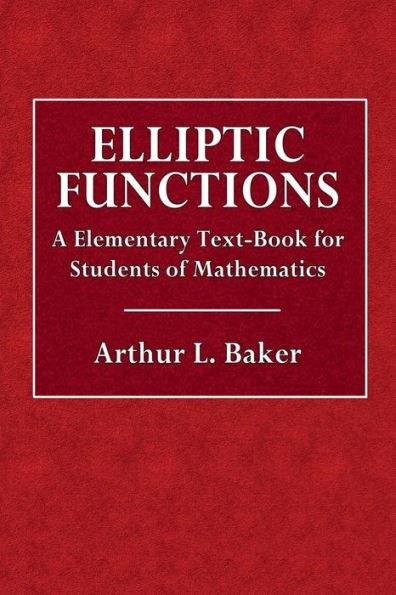From the INTRODUCTORY CHAPTER.
The first step taken in the theory of Elliptic Functions was the determination of a relation between the amplitudes of three functions of either order, such that there should exist an algebraic relation between the three functions themselves of which these were the amplitudes. It is one of the most remarkable discoveries which science owes to Euler. In 1761 he gave to the world the complete integration of an equation of two terms, each an elliptic function of the first or second order, not separately integrable.
This integration introduced an arbitrary constant in the form of a third function, related to the first two by a given equation between the amplitudes of the three.
In 1775 Landen, an English mathematician, published his celebrated theorem showing that any arc of a hyperbola may be measured by two arcs of an ellipse, an important element of the theory of Elliptic Functions, but then an isolated result. The great problem of comparison of Elliptic Functions of different moduli remained unsolved, though Euler, in a measure, exhausted the comparison of functions of the same modulus. It was completed in 1784 by Lagrange, and for the computation of numerical results leaves little to be desired. The value of a function may be determined by it, in terms of increasing or diminishing moduli, until at length it depends upon a function having a modulus of zero, or unity.
For all practical purposes this was sufficient. The enormous task of calculating tables was undertaken by Legendre. His labors did not end here, however. There is none of the discoveries of his predecessors which has not received some perfection at his hands; and it was he who first supplied to the whole that connection and arrangement which have made it an independent science.
The theory of Elliptic Integrals remained at a standstill from 1786, the year when Legendre took it up, until the year 1827, when the second volume of his Traite des Fonctions Elliptiques appeared. Scarcely so, however, when there appeared the researches of Jacobi, a Professor of Mathematics in Konigsberg, in the 123d number of the Journal of Schumacher, and those of Abel, Professor of Mathematics at Christiania, in the 3d number of Crelle's Journal for 1827.
These publications put the theory of Elliptic Functions upon an entirely new basis. The researches of Jacobi have for their principal object the development of that general relation of functions of the first order having different moduli, of which the scales of Legrange and Legendre are particular cases.



